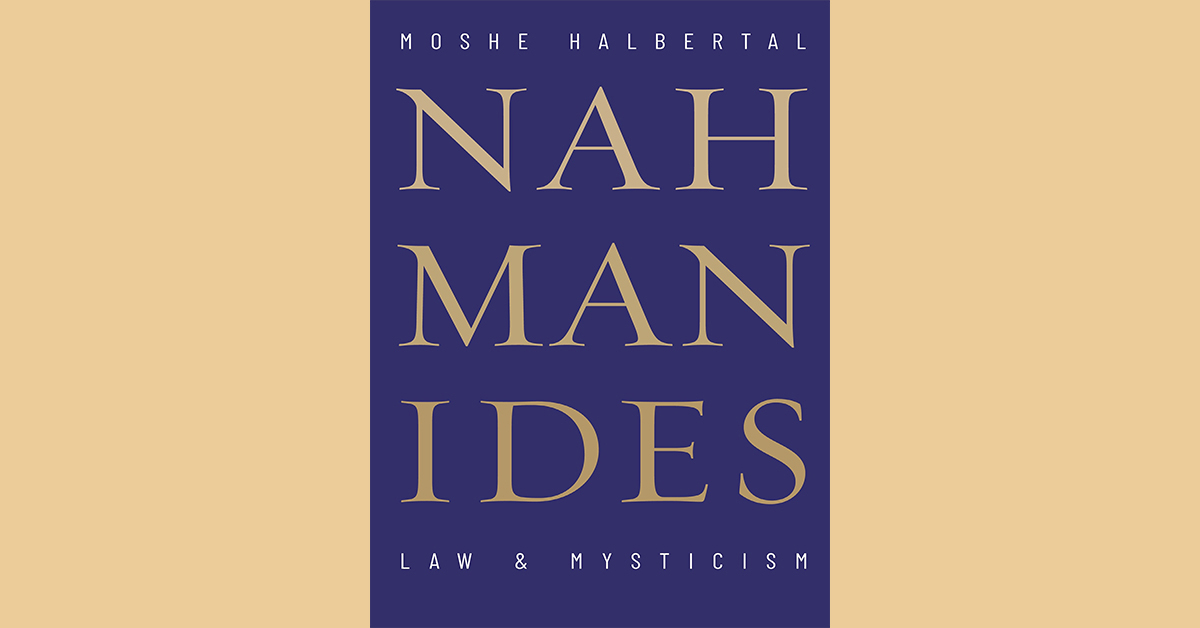May 12, 2021 By: yunews
Moshe Halbertal | Yale University Press | 2020
Reviewed by Rabbi Dr. Stu Halpern
Moshe Halbertal’s Nahmanides: Law and Mysticism (translated by Daniel Tabak) provides a robust and nuanced study of one of Judaism’s most iconic medieval thinkers. Halbertal, a professor at both Hebrew University and NYU Law School and author of Maimonides: Life and Thought, among many other important works, summarizes and analyzes R. Moses ben Nahman’s (1194-1270) influences, insights, and impact. The volume traces the prolific commentator and communal leader’s “psychological realism, moral sensitivity, and exegetical precision” through themes including his philosophy of law, the nature of God, miracles, history, and esotericism. As Halbertal’s learned study notes in its introduction, Nahmanides’ contributions to halakhah, Kabbalah, and biblical interpretation each would have canonized him as a seminal Jewish thinker, and his ability to offer original contributions in all of these realms, coupled with impactful communal leadership (including a stalwart defense of Judaism in the Aragonese court), is truly extraordinary. Only Maimonides’ lifelong impact rivals that of the work’s subject, and the two are often, in the minds of both scholars, laity, and this volume, compared and contrasted. Maimonides brought philosophical motifs into the heart of Jewish thought, while Nahmanides (who publicly defended Maimonides’ legacy) claimed that it was Kabbalah that constituted Judaism’s innermost essence. Nahmanides' and Maimonides' different conceptions of rabbinic law's relationship to the Divine revelation at Sinai are detailed, among other topics, by Halbertal. (Nahmanides felt that the Torah is a sequence of God’s names that encapsulates His essence and “trie[d] to include the entire halakhic system in the primary revelatory event,” while Maimonides strove to distinguish between what Moses had received and what the rabbis developed.) While acknowledging that Nahmanides' "tight-lipped" esotericism makes fully understanding his cryptic mystical allusions a quixotic quest, Halbertal attempts to unpack the medievalist's conceptions of the World to Come, resurrection, and the nature of God’s “internal repair mechanism” that will constitute the eschaton. In Nahmanides’ view, free will, individuation, commandments, and even death itself will cease with the arrival of the Messiah. Particularly informative is Halbertal’s analysis of Nahmanides’ understanding of the dichotomy between nature and miracles, as his view is more multilayered than the conventional presumption that Nahmanides didn’t believe in what is usually termed “nature.” As Halbertal summarizes, “Just as Shekhinah [sic] is eternal and not subject to the accidents of Nature, the same becomes true of the righteous person cleaving to and becoming identical to Shekhinah—'their becoming one entity'"—meaning some human beings (“the righteous”) merit particular providence, while others are subject to predictable natural events. Other topics Halbertal analyzes include Nahmanides’ conception of four levels of prophecy, the exegetical principle that “everything that happened to the Forefathers is a sign for the progeny” (which most likely was borrowed from Christian exegetes), his willingness to criticize biblical figures, and his calculations of the year the Messiah would arrive. Throughout, Halbertal articulates Nahmanides' complex mystical interpretations to the extent possible. Ffor example, God’s mercy as expressed, after Noah’s flood, in the rainbow in the cloud, is a "divine...act of self-unification, it represents aspects of the Godhead interacting with one another and coming together." In Nahmanides' view, contrary to the distinction suggested by Yehezkel Kaufmann between pagan magic and Judaism’s God who is unaffected by human action, human beings can, through the fulfilments of the commandments, have an impact upon God’s essence Itself. In Halbertal’s words, for Nahmanides, “As beings created in the divine image, humans are a kind of talisman for drawing Shekhinah into the world, and through their actions as signifiers of the Godhead they cause it to be emanated into the lower realms.” Moshe Halbertal is a renowned scholar of Jewish law and philosophy, and in Nahmanides: Law and Mysticism, he has contributed a definitive study of medieval Judaism's most fascinating intellectual figures. To read more Straus Center book reviews, click here. You can learn more about the Straus Center and sign up for our newsletter here. Be sure to also like us on Facebook, follow us on Twitter and Instagram and connect with us on LinkedIn.

